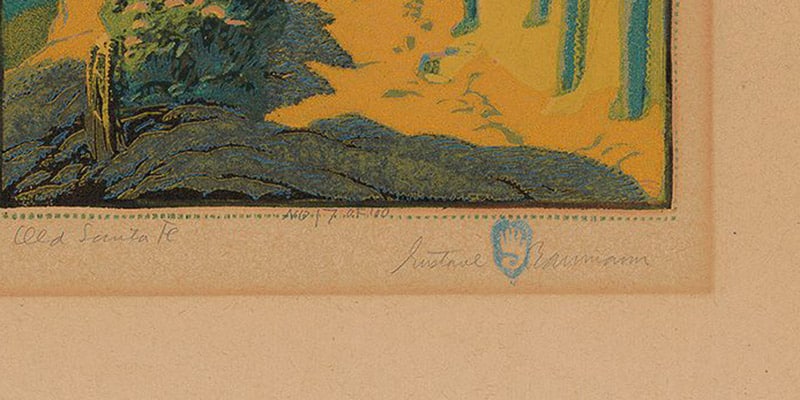Birds of America Double-elephant folio Editions
Viviparous Quadruped Imperial Folio Editions
This glossary contains terms and definitions used in the art restoration, art conservation, printmaking, and fine art framing. The terms defined here serve as an important resource to art buyers and sellers. Please contact us if you have any questions or visit our FAQ page.
Acid is a substance able to donate protons or accept an electron pair in reactions. Any material having a pH level of seven or higher is considered acid free. Acidic is an unstable state whereby the molecular structure of the paper breaks down, causing discoloration, or yellowing, and weakening of the sheet.
An early method of printing in color. A full color image is created with only one plate and avoids the difficulties of registration and color theory required for multiple plate or stone printing. À la poupée inking utilizes a cloth daubing pouch whose shape resembles a poupée (“doll” in French). The copper plate is inked in full color; in essence, the plate is hand colored. The print is then made in full color with one pass through the press. The artist would usually add final touches to each print with watercolor, hence the term “finished by hand.” An engraving colored in this manner reveals the various colors within the actual engraved lines or stippled dots. This differs from a hand-colored engraving where the engraved lines reveal one color of ink (usually black) underneath the broader areas of transparent watercolor applied after the print is made.
The image pictured to the left is from Redouté’s Les Roses, Plate 24 Austrian Copper Rose.
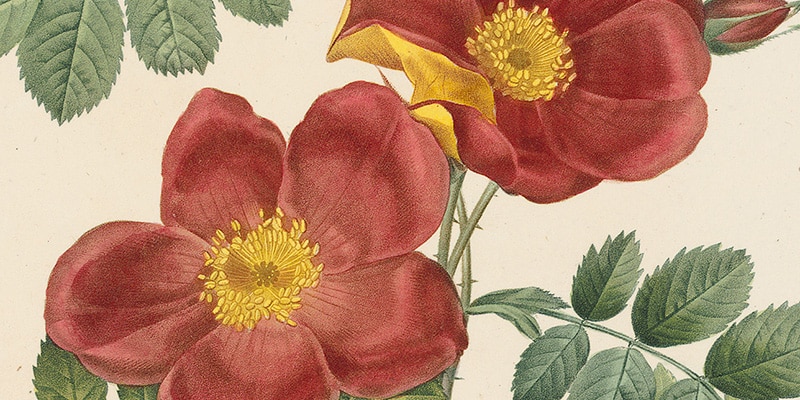
Archival materials have good aging properties due to a neutral or slightly alkaline pH. 100% cotton rag paper is an example of an archival material. All materials used in our restoration, conservation, and framing are archival. Our Oppenheimer Editions‘ prints are also considered archival.
Aquatint is an etching process that creates tonal areas on the plate. It is usually used in conjunction with line engraving or etching. A porous resin ground is applied to the plate. This ground is then made to contract either by a heating process or suspension in a solvent. The contraction of the resin particles causes an irregular linear pattern to form around each particle. The plate is then etched with acid, which affects only the linear patterned parts of the exposed copper. The word aquatint is derived from aquafortis, which translates to “strong water.” The term refers to nitric acid, which is used to etch the copper plate.
The best examples of this technique are seen in the early nineteenth-century English works of Havell, Brookshaw and Thornton. The image to the right is from Thornton’s Temple of Flora Plate 14 Night Blowing Cereus.
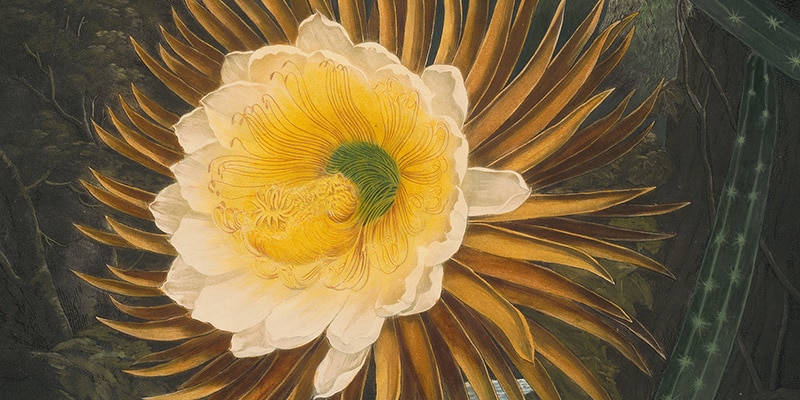
Chine-collé is a printmaking technique used with etching or lithography. A Chine-collé is where the image is printed on a thin sheet of paper that is mounted to a heavier sheet of paper. The heavier sheet of paper often has a plate mark. The Henri Matisse print to the right is an example of a chine-collé engraving.
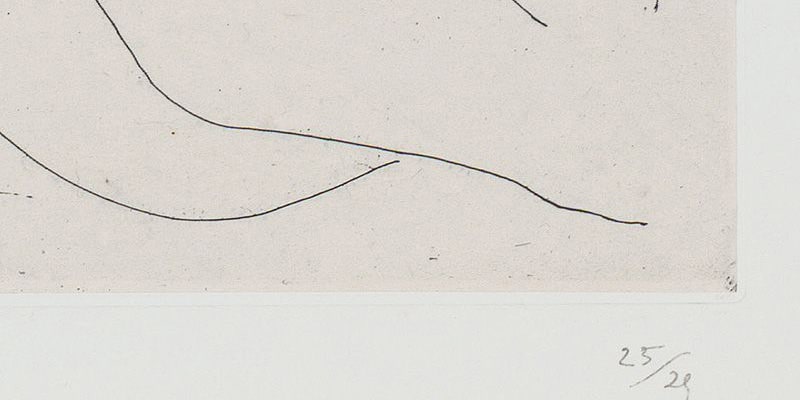
A condition report is a written documentation of the condition of a work of art itemizing the details of the art like the medium and dimensions. Most importantly a condition report documents damage to a work of art, and will notate any recommended conservation or restoration procedures. Artwork should be thoroughly documented with photographs before and after restoration. Condition reports in addition to being a conservation and restoration guide for the conservator, may also be necessary when selling or transporting artwork.
Art conservation is the preservation of works of art including drawings, paintings, photographs, fiber art, and objects. Art conservation prevents the further deterioration and stabilizes damage to works of art. Conservation techniques should always be reversible and not permanently change a work of art. Joel Oppenheimer Inc. performs art conservation techniques in addition to art restoration.
Consolidation is a conservation treatment using a variety of archival adhesives to re-adhere loose paint or broken parts of the support and to prevent recurrence of delaminations. Consolidation is a restoration treatment that repairs lifting paper fibers caused by surface abrasions.
The image to the right has surface abrasions caused when the artwork was pulled from the mount. The paper surface will be repaired by consolidating the lifting fibers.
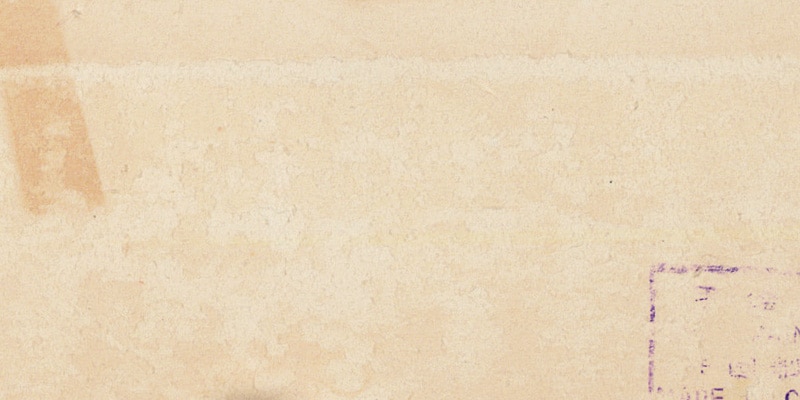
Chromolithography is a printing process using separate stones for each color and is a natural extension of one-color lithography. Before the use of chromolithography, prints were usually colored by hand. This new process was an ambitious development utilizing multiple stones. The difficulty of aligning the paper perfectly (registering) for each color was the primary challenge in the development of this printmaking technique.
Chromolithography was developed during the second half of the nineteenth century. Its best-known early proponent was Julius Bien, who used this technique when printing the 1858-1860 Bien Edition of The Birds of America.

Double elephant folio is a bookbinding, papermaking, and printing term used to refer to very large prints and books. Double elephant size is the largest and can range up to 50″ on the longest side. Audubon’s Havell and Bien Editions are double elephant sizes.
The 1981 publication of The Birds of America by the Audubon Society is often referred to as the baby elephant folio.
In this photo Joel Oppenheimer stands behind a double elephant folio of the Bien Edition. Behind him is a double elephant sized print of Audubon’s Flamingo.
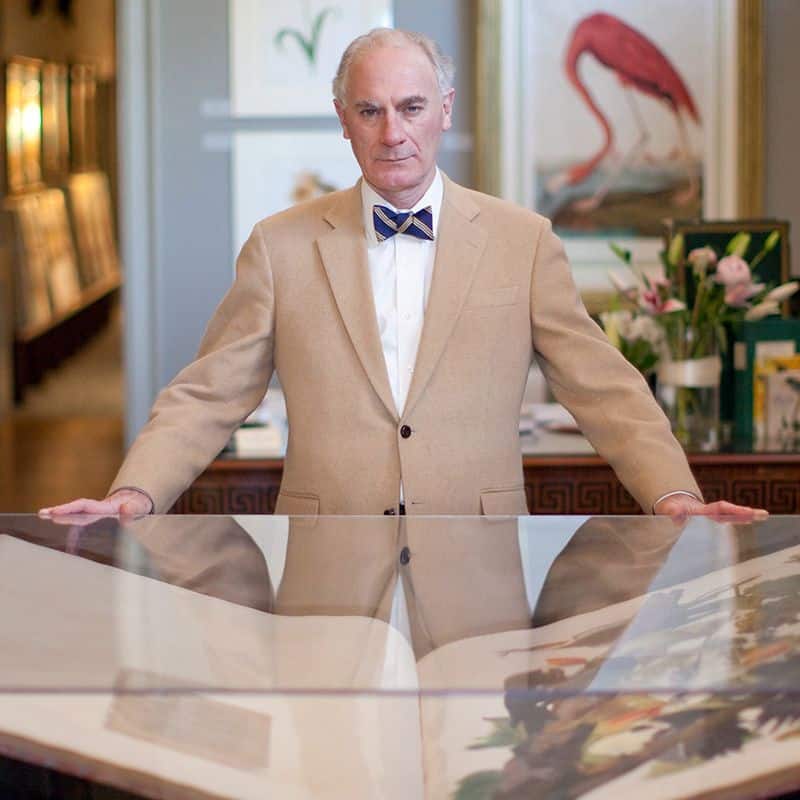
Drypoint is an etching technique that involves the use of a sharp tool, burin, to physically incise lines into the copper plate. This differs from traditional etching which relies on a chemical process to etch the lines into the plate. The characteristic soft lines of a drypoint etching are created by the jagged edge of the lines cut by the burin; this rough edge is called the burr. The soft lines in the background of the Roland Clark print to the right are created using drypoint techniques.
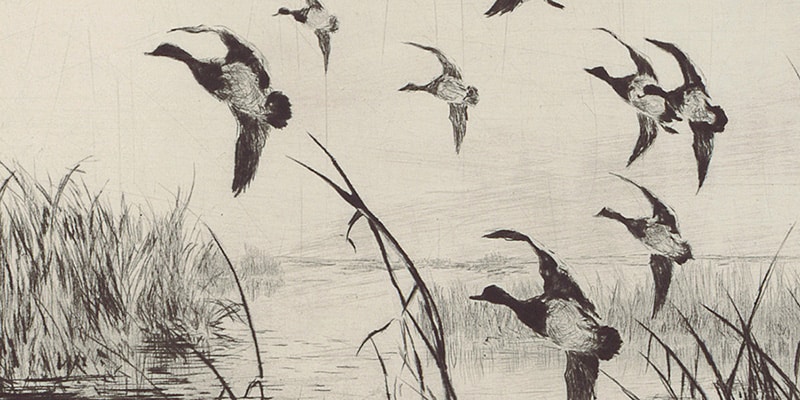
A fragile condition that results from dehydration and prolonged acidic degradation. This architectural drawing of a brewery has become severely embrittled. The drawing on paper is cracking and flaking into some pieces. The wood pulp board on which the drawing is mounted is highly acidic and has also become embrittled. Careful conservation techniques can save this drawing.
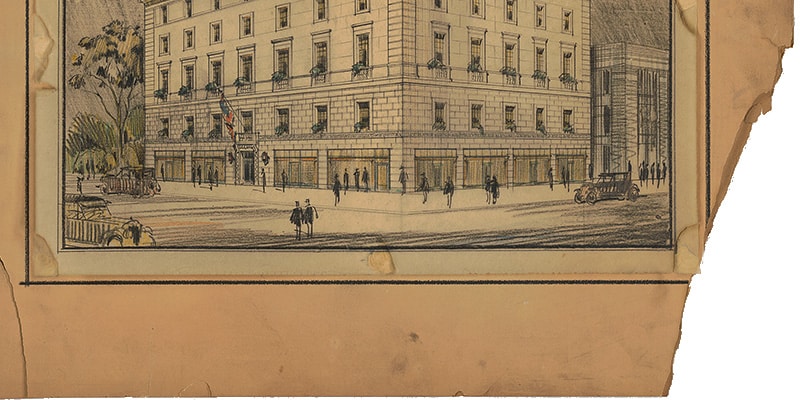
Etching and engraving are both printmaking techniques in which the lines in the copper plate are chemically etched into the copper by either immersing the plate into acid or otherwise applying acid to the copper surface. The plate is first coated with a solid ground of resin or wax. This ground is then scratched away with a needle that selectively exposes the copper in those areas. The ground resists the acid, allowing it to “bite” into only the areas that have been drawn on with the needle. The depth of the line is dictated by the duration of exposure of the plate to the acid.
Although the technique of making the plate differs from engraving, the method of printing an etching is identical to that of printing an engraving. Both engraving and etching show the characteristic plate mark in the paper. The quality of the line created, however, is quite different and distinguishable to the trained eye. The uncolored engraving Plate 115, Blue cornflower, White, pink, and mauve cornflowers to the right is from Besler’s Hortus Eystettensis Deluxe Edition.
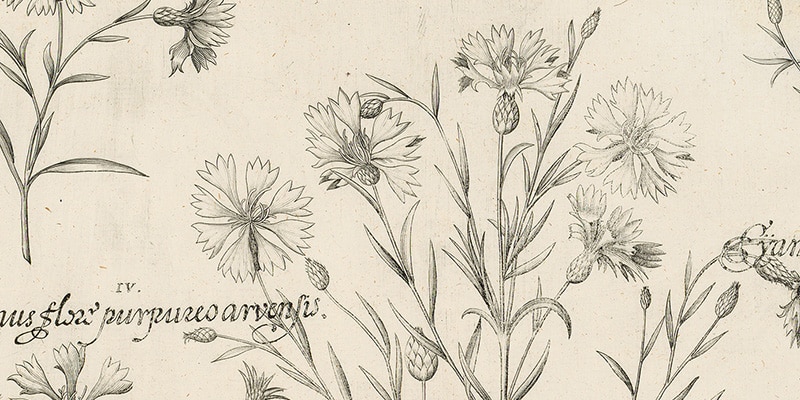
Fiberfill is a restoration procedure utilizing paper pulp to complete losses in a sheet of paper. Replacing the missing fiber in a sheet of paper is often only the first step in completing a loss. Color or tone is often added after the fiberfill is applied to create a nearly invisible repair.
To the right are before and after images of an example of fiberfill. The image to the left shows the severely compromised sheet. The image to the right shows the repair including filling the losses with fiber created from 100% cotton rag.
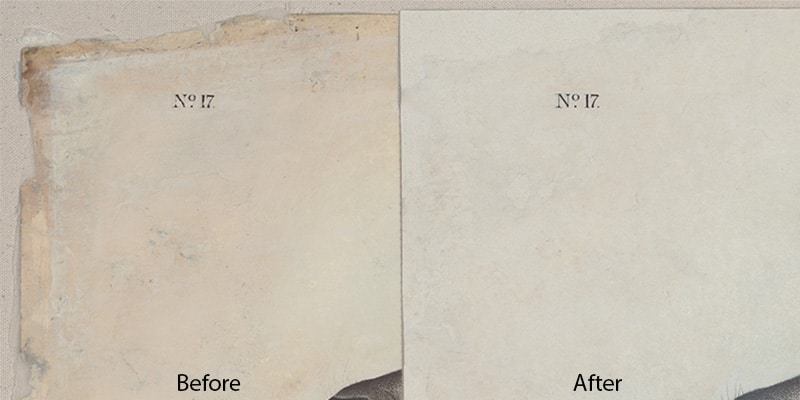
A finished corner frame or closed corner frame is completed by hand after joining the moulding to create a seamless look. Joel Oppenheimer, Inc. offers an expansive selection of finished corner frames. Each frame is custom designed by our framing specialists to uniquely compliment your artwork and interior decoration. Read more about choosing a frame style.
The frame to the right is an example of a finished corner. The gold leaf is hand-applied over blue clay by skilled artisans. Visit our frame studio and gallery to browse hundreds of finished corner frames in all types of styles.
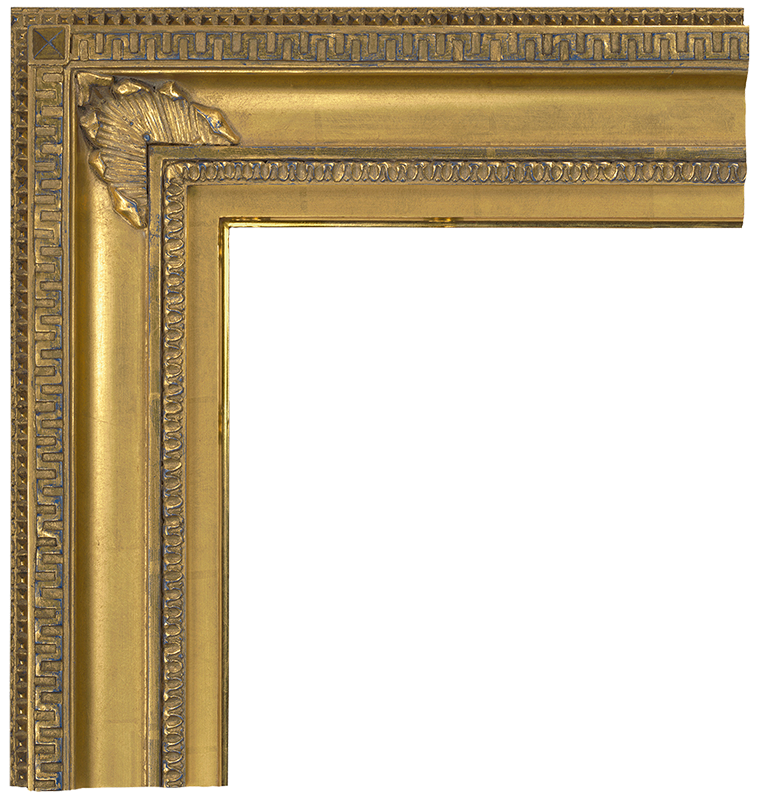
A fillet or spacer is a framing material placed between the glazing and the mount in a frame which prohibits the glazing material from coming in contact with the artwork. Deep fillets or spacers can be used to create a shadow box frame. Fillets or spacers can be custom designed by our framing specialists.
Flaking is a restoration or conservation term used to refer to extreme cracking that causes the paint and/or ground layer to dislodge from its support, often through a combination of cleavage and cracking. Flaking can be repaired by a skilled painting conservator.
The oil painting on board to the right is severely flaking.
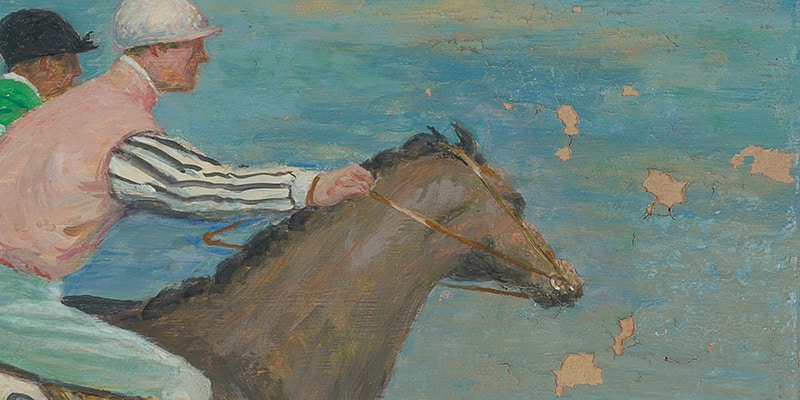
The flattening process is different for each type of artwork, and is the most comm restoration procedure. Most works on paper can be flattened by using a highly controlled humidification and drying under pressure combination. Other types of artwork, like vellum, need to be flatten by dry methods that often take many weeks or months.
When an artwork is floated with a facemat the entire artwork is visible. This is a traditional way of displaying artwork without covering the edges.
The image to the right is from our Oppenheimer Editions collection of Audubon’s Watercolors and is titled Plate 47 Ruby-throated Hummingbird.
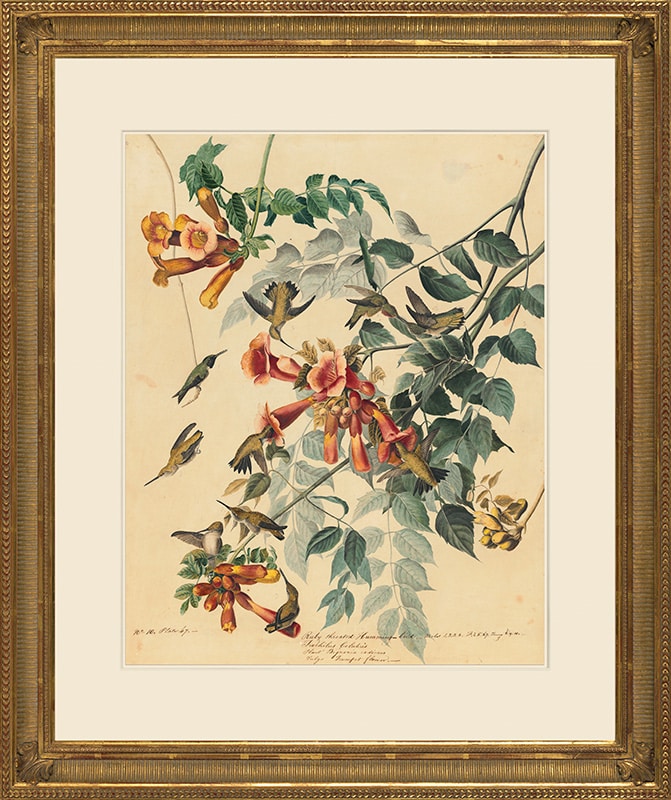
Floated with fillets or spacers is a framing style that fully displays the entire artwork in a shadow box style. This style of framing is ideal for artworks with dimension or uneven edges.
The image to the right is an original Audubon print from the Havell Edition of Audubon’s Birds of America and is titled Plate 102 Blue Jay.

Rust-colored spots or blotches on paper are called foxing. Foxing is a type of stain in paper resulting from mold growth and usually occurs when artwork is exposed to high humidity and acidic conditions. Cleaning solutions used in restoration labs can successfully remove foxing from paper without damaging the paper fibers.

Giclée is a generic term used to describe a variety of sophisticated large-scale inkjet printers. Giclée is a French word meaning “spray” or “spurt”, and refers to how the ink or dye is applied to paper or fabric. A giclée printer is capable of producing millions of colors using continuous-tone technology. The extra-fine image resolution possible with giclée printing permits retention of a high degree of fine detail from the original image, rendering deeply saturated colors having a broad range of tonal values.
Our Oppenheimer Editions prints are an examples of giclée printing at its best.
In framing, a hinge is a folding or hanging material used to attach artwork to a mount allowing limited movement to occur. Hinge types vary based on the artwork material and mat style. Mylar corners are an alternative method to secure an artwork to a mount. Hinges can be removed from an artwork using restoration techniques based on the type of adhesive.
In a fold, when the paper fiber has ruptured or torn, and the surface is no longer continuous. Interrupted fibers often lead to a tear. The severely weakened paper fibers should be stabilized to prevent further damage. The folds with interrupted fibers in this vintage letter can be backed with a supportive tissue and will be diminished.
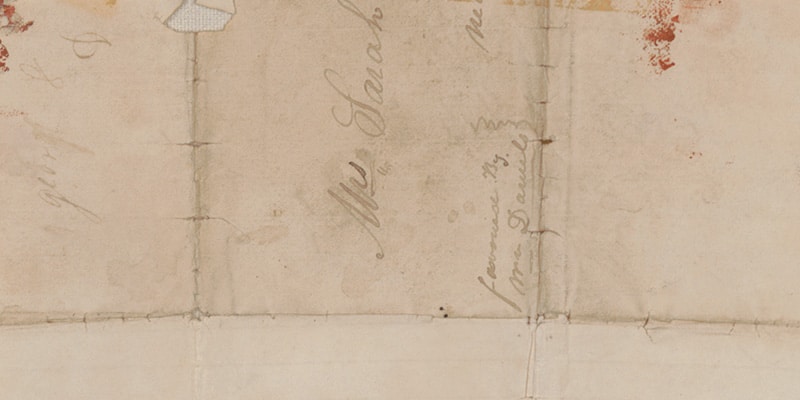
Copper plate engraving was introduced in the fifteenth century. A thin copper plate is polished smooth. The lines are manually incised into the plate with a sharp, steel-bladed tool called a burin. The tip of the burin is V-shaped, thus allowing the thickness of the engraved line to be controlled by the depth of the incision in the plate. The plate is inked, and the ink is then wiped away. The ink remaining in the recesses of the engraved lines is transferred to paper under extreme pressure in a printing press. The resulting image is an engraving.
The Oppenheimer Editions publication of Description De L’ Egypte is uniquely produced from the original copper engravings in the collection of The Field Museum’s Mary W. Runnells Rare Book Room.
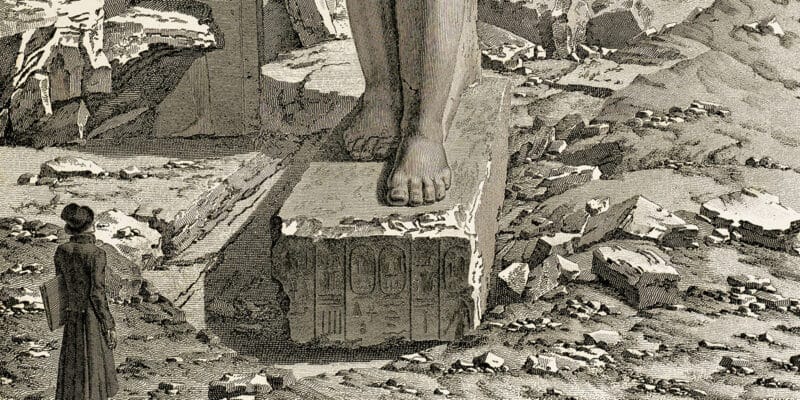
Lithography is a printmaking technique completely different from the other printing processes in that it does not rely on designs cut in relief or incised in the printing element to retain the ink. Lithography was discovered by a fluke occurrence observed and developed by a German printer named Senefelder. In 1797, Senefelder, out of paper, scribed a laundry list with a grease pencil on a limestone slab in his studio. Attempting to clean the stone, he found that the greasy area resisted the washing.
The lithographic technique relies on this principle. First the drawing is made with a grease-based crayon. The stone is then wetted. The limestone absorbs the moisture and the crayon drawing repels it. Ink is then applied to the stone and the reverse occurs. The wet stone repels the ink, and the crayon drawing accepts it. A print is then made by pressing paper against the stone. This is done with a printing press designed for this purpose.
The ease with which an artist can translate his talent into lithography stimulated a proliferation of art prints in the latter half of the nineteenth century. Stone lithography, as described here, is not to be confused with commercial offset lithography, a photomechanical process that does not involve the artist’s hand.
John James Audubon’s Quadruped Imperial Bowen Edition are hand-colored lithographs.
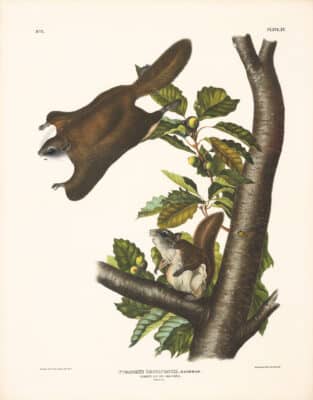
Mat burn is discoloration under a facemat is often caused by acidity.
Reverse mat burn is discoloration of the area not covered by a facemat and is often the cause of acidity and/or exposure to UV light. This Gustave Baumann print has a moderate reverse mat burn in the margins.
Cleaning solutions in a restoration lab can most often remove mat burn as well as reverse mat burn. Archival framing materials should be used to prevent mat burn.
